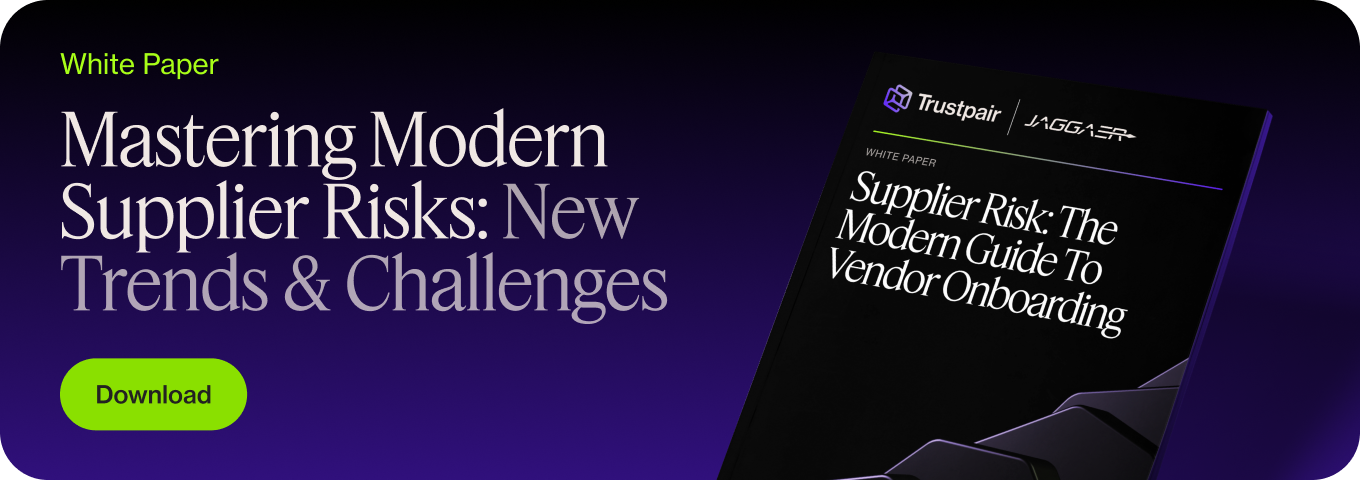The procure-to-pay process is a series of steps that businesses follow to purchase goods or services and make payments to suppliers. It starts with identifying a need for a product or service, sending an order form, and ends with paying the supplier’s invoice. Improving the Procure-to-Pay (P2P) process is essential for any business that wants to work more efficiently and safely. In this article, discover 5 procure-to-pay best practices that can make a big difference in your company’s finances and operations.
Trustpair secures your procure-to-pay process by constantly monitoring vendor data and status. Wipe out vendor fraud with our best-in-class software!
1. Standardize and keep your processes up-to-date
When was the last time your procure-to-pay process was updated? As companies evolve, their business processes must evolve with them too. Regardless of what your company’s process is now, it could probably benefit from being reviewed and refined.
Standardizing procedures within the P2P streamlines operations, enhances efficiency, and minimizes the risk of errors and fraud. By establishing clear, consistent guidelines and workflows for purchasing, invoicing, and payments, companies can achieve a more transparent P2P cycle.
The standardization of P2P processes involves defining policies for requisitioning goods and services, approving purchases, processing invoices, and executing payments. This will ensure all transactions are handled systematically, reducing the risk of error and fraud. It also facilitates quicker decision-making and approval processes. Indeed, stakeholders are familiar with the steps involved and the documentation required at each stage. Your finance and procurement team will have more time to focus on the most sensitive – or risky – situations.
Implementing standardized processes also supports compliance by ensuring that all transactions follow internal control policies and external regulatory requirements. It creates a clear audit trail of all procurement activities, making it easier to review transactions, identify discrepancies, and address compliance issues.
Moreover, standardization also helps with data management and analysis. Consistent processes produce consistent data, which can be systematically collected and analyzed to gain insights into spending patterns, supplier performance, and potential savings opportunities.
In summary, standardizing procure-to-pay processes not only streamlines the procurement and payment processes but also strengthens financial controls, enhances transparency, and provides valuable data for strategic decision-making.
2. Foster and strengthen supplier relationships
Supplier relationships are the heart of the procure-to-pay (P2P) process. Supplier management is more than just managing contracts and transactions; it’s about building a partnership based on trust, mutual respect, and shared goals. Strong supplier relationships can lead to several benefits, including improved product quality, preferential pricing, and priority service, which can be particularly valuable during supply chain disruptions.
Clear communication is at the center of strong supplier relationships. Regular interactions, whether through meetings, calls, or digital platforms, help in understanding each other’s needs, expectations, and capabilities. It also provides an opportunity to address any issues promptly, minimizing disruptions to the supply chain. Find the right tools and software to interact easily with your suppliers and it’s likely your performance will improve.
Another key aspect of supplier management is performance evaluation. By regularly assessing supplier performance against agreed-upon metrics and KPIs, companies can identify areas for improvement and recognize outstanding service. This not only helps in maintaining high standards but also motivates suppliers to consistently meet or exceed expectations.
Finally, fostering innovation and collaboration with suppliers can lead to new solutions in the procure-to-pay process. Inviting suppliers to contribute to ideas and collaborate on projects can unlock value in unexpected ways, from cost savings to process improvements, enhancing the overall procurement strategy.
Download our vendor onboarding guide to improve supplier relationships!
3. Enhance data quality and visibility
High-quality, accessible data ensures that procurement and finance teams can make informed decisions, manage spend effectively, and maintain control over the entire P2P cycle. This means implementing systems and solutions that ensure data accuracy, completeness, and consistency. On top of consistency and efficiency, this will also bring more time and peace of mind to your finance team.
Centralizing data storage is a critical step for better visibility. By consolidating procurement data into a single, integrated system, organizations can eliminate data silos, making it easier to access and analyze information. This centralization supports better tracking of transactions, from the purchase order to the final payment, and enables real-time monitoring of procurement activities.
Regular data audits and cleanings are also important. These processes identify and correct errors, duplicates, and outdated information, maintaining the integrity of procurement data. Moreover, adopting standardized data entry protocols and using automation can significantly reduce manual errors and improve the efficiency of data collection. For example, using Trustpair – best-in-class fraud prevention software – will ensure a healthy vendor database at all times, thanks to ongoing data controls.
Investing in advanced analytics tools amplifies the benefits of high-quality data. These tools can provide deep insights into spending patterns, supplier performance, and potential bottlenecks, enabling proactive management of the procurement process and strategic decision-making based on reliable data.
4. Focus on continuous improvements and control
Constantly improving the procure-to-pay (P2P) process is important for businesses that want to enhance efficiency, reduce costs, and maintain competitive advantages. This approach involves regularly assessing and refining every aspect of the P2P cycle, from sourcing and procurement to payment and supplier relationship management. The goal is to make sure the procure-to-pay process remains agile and aligned with the organization’s strategic goals.
This mindset requires organizations to be proactive in identifying inefficiencies and areas for improvement. This can be achieved through regular audits and performance reviews, leveraging stakeholder feedback, including suppliers, procurement teams, and finance departments. These assessments can identify bottlenecks, outdated processes, and emerging risks.
Encouraging innovation and embracing technology is a big part of continuous improvement. Emerging technologies like AI, machine learning, and blockchain can automate routine tasks, improve data analytics capabilities, and ensure transparency and security across the P2P process.
5. Use automation and software to optimize the whole process
Implementing an automated P2P system can significantly reduce manual errors, speed up processing delays, and improve visibility into the entire procurement process. Automation can include electronic purchase orders, invoices, and payments, as well as automated matching and approval workflows.
Using software will help you to automate parts of your process. It therefore also reduces your labor cost and the human errors that’d irremediably be made if done manually. For example, using anti-fraud software like Trustpair guarantees that your procure-to-pay process is safe from end to end.
To be completely safe, account details should be verified before every payment transfer. Doing so manually is time-consuming and error-prone. It’d be virtually impossible to check all the information of all your suppliers, all the time. Our solution automatically checks your third-party information in real-time against international data sources. Thanks to machine learning, we’re able to quickly detect anything suspicious and raise the alert to your dashboard.
Contact one of our experts to learn more.
To sum up, optimizing your Procure-to-Pay process is key to boosting efficiency and protecting your business from fraud. By following best practices like standardizing procedures, improving data consistency, and leveraging automation with software like Trustpair, you can secure your financial operations. These changes not only safeguard against fraud but also streamline your financial workflows, making your business more agile and compliant.






